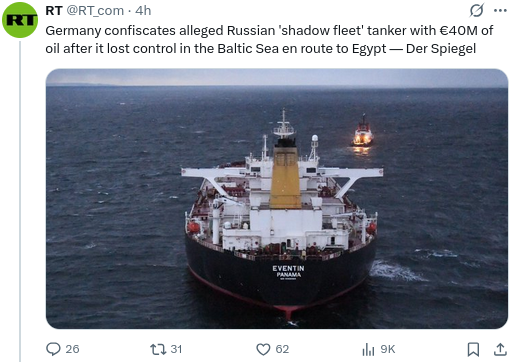The Boeing 767-338(ER), call sign “Zion Wing,” soared at 35,000 feet over Turkish airspace, its engines humming steadily on a late-night flight from Tel Aviv to Washington, D.C. Inside the modified government jet, the cabin was a fortress of security and luxury—plush seats, encrypted comms, and a small medical bay tucked behind a reinforced door. Prime Minister Benjamin Netanyahu, 75, sat near the front, his face etched with the strain of a corruption trial, a war in Gaza, and ICC arrest warrants issued in 2024, now expanded to genocide charges in 2025. He was a man on the run, but not from the law tonight—from his own body.
The plane carried a skeleton crew of trusted personnel: Shin Bet operatives doubling as field medics, Netanyahu’s personal physician Dr. Eli Cohen, and an IDF trauma surgeon, Major Avi Lerner, the best field medic in the service. Lerner had trained for every scenario, from battlefield gunshot wounds to emergency catheterizations, though his real-world experience with the latter was thin. The medical bay, enabled by the plane’s HEPA filter for sterile conditions, was equipped with a fold-out surgical table, portable ultrasound, fluoroscopy for X-ray imaging, a ventilator, and a stock of drugs—morphine, beta-blockers, tPA, tenecteplase, tranexamic acid, propofol. It was a flying ICU, but it lacked one critical piece: a cardiopulmonary bypass machine for open-heart surgery.
Netanyahu rubbed his chest, a grimace crossing his face. He’d been under relentless stress—46,000 Palestinian deaths in Gaza since October 2023, a war he’d escalated, and a damning 2024 memo tying him to civilian targeting, now in ICC hands. “Eli,” he muttered to Dr. Cohen, “I don’t feel right.”
Before Cohen could respond, Netanyahu doubled over, clutching his chest. A scream tore from his throat—a raw, guttural sound. “It’s tearing me apart!” The pain, a 10/10 “ripping” sensation radiating to his back, was unmistakable to Lerner, who rushed over with the ultrasound. The screen confirmed his fear: an acute aortic dissection (AAD). The aorta’s inner layer had torn, blood splitting the wall, threatening rupture or organ failure. Mortality: 1-2% per hour untreated.
“We need to land—now!” Lerner barked, starting an IV with morphine (20 mg) to dull the pain. It dropped to 8/10—still unbearable. Beta-blockers (esmolol) and antihypertensives (nitroprusside) followed to lower his blood pressure, slowing the tear. Oxygen hissed through a mask, and the cardiac monitor beeped erratically—Netanyahu’s pressure was tanking.
“End the pain!” Netanyahu gasped, his eyes wild. “Land the damn plane!” He meant Istanbul, 10 minutes away—the nearest suitable airport per ICAO rules. But Turkey, an ICC member since 2023, would arrest him on sight. Erdoğan’s government, furious over Gaza, would extradite him to The Hague for genocide—life in prison.
The pilot, IAF Captain Dan Shalev, relayed the emergency to headquarters. The chain of command kicked in: Shalev to IAF commander Aluf Tomer Bar, then to Defense Minister Israel Katz. Katz’s voice crackled over the comms: “Divert to Cyprus. Under no circumstances do you land in Turkey.” Cyprus, a non-ICC member, was 30 minutes away—200 miles at 500 mph. Katz knew the stakes—if Netanyahu was arrested, he might testify, implicating Katz in the same genocidal acts (the memo bore both their signatures).
Dr. Cohen hesitated. “He’s in agony, sir. He won’t make it 30 minutes without surgery. We can’t do open-heart here—no bypass machine.” Lerner nodded grimly. “We can stabilize, but he’s right. The pain’s driving him—he’ll force a landing.”
“Then end the pain,” Katz ordered. “Do what you have to. Get him to Cyprus.”
Cohen and Lerner exchanged a look. Netanyahu’s demand—“end the pain”—could mean anything in his delirious state. Landing in Turkey would save his life (90% survival with surgery, JACC, 2024) but end his freedom. Katz’s order was clear: no Turkey. The team had two options: overdose opioids (morphine or fentanyl) to sedate him, risking death, or induce a coma to knock him out, buying time.
“Overdose is too risky,” Lerner said, prepping a syringe of propofol. “Sixty percent chance he stops breathing. We induce a coma—propofol, intubate, ventilate. It’ll stop the pain, keep him stable.” Cohen nodded, though his hands shook. Intubation at 35,000 feet (cabin pressure 8,000 feet equivalent) carried risks—hypoxia, tube misplacement. Propofol could drop his blood pressure further, speeding the dissection.
They moved fast. Lerner intubated, securing the airway, while Cohen started the propofol drip—Netanyahu’s eyes fluttered shut, his body going limp. The ventilator hissed rhythmically, and the monitor showed a pulse—weak, but there. The pain was “ended”—he was unconscious. But the AAD persisted, and the coma added risks: hypotension (propofol’s side effect), intubation complications, and the ever-present chance of rupture.
Shalev banked the plane toward Cyprus, 30 minutes out. Lerner watched the monitor—blood pressure was 90/50, dangerously low. “He’s hypotensive,” he muttered. “If the aorta ruptures, we’re done.” Cohen adjusted the beta-blockers, trying to stabilize him, but the dissection was a ticking bomb—15% mortality in 30 minutes from rupture or organ failure (Circulation, 2023). The coma added a 20% death risk from complications (hypotension, hypoxia), making the total death chance 32% (1 - (1 - 0.15) × (1 - 0.20)).
The minutes crawled by. At 15 minutes, the monitor beeped—pressure dropped to 80/40. “He’s crashing!” Cohen shouted, starting IV fluids. Lerner grabbed the defibrillator, but it wasn’t a shockable rhythm—just the dissection worsening. They upped the antihypertensives, praying the tear wouldn’t rupture. Netanyahu’s face was pale, his breathing shallow even on the ventilator.
At 25 minutes, a new alarm—oxygen saturation fell to 88%. Hypoxia, likely from intubation stress at altitude. Lerner adjusted the ventilator, but the damage was done. The aorta, weakened by the tear and hypotension, gave way—a silent rupture. The monitor flatlined. “We’ve lost him!” Cohen yelled, starting CPR. Lerner shocked him—once, twice—but it was over. The AAD had won.
Shalev landed in Larnaca, Cyprus, 5 minutes later. Netanyahu was pronounced dead on arrival—32% chance of death had rolled the dice against him. Katz, informed mid-flight, prepared his statement: “A tragic loss. We did everything to save our leader.” The medical team was clear—they’d followed orders. But whispers spread—had Katz’s diversion, prioritizing freedom over life, killed the PM?
In The Hague, ICC prosecutors sighed. The arrest they’d hoped for—70% likely if he’d landed in Turkey—was off the table. Netanyahu’s death closed the case, but Katz’s role in the memo (46,000+ deaths, civilian targeting) remained. The Zion Wing returned to Tel Aviv, its medical bay silent, a grim reminder of a gamble that failed.
Katz mourned publicly, but privately, he saw opportunity—Netanyahu’s death opened the door for his own rise in Likud. The ICC turned its gaze to him, but without Netanyahu’s testimony, the case was weaker. On the ground in Gaza, the war raged on, the 46,000 dead a shadow over Israel’s future. AAD had ended one man’s fight, but the larger battle—for justice, for survival—burned brighter than ever.
October 7, 2023 Attack: Hamas-led assault killed ~1,139 Israelis, mostly civilians. Official narrative blames Hamas, but evidence suggests IDF’s Hannibal Directive—ordering fire to prevent captures—may have caused significant Israeli deaths via heavy weaponry (tanks, helicopters). Devastation (melted cars, leveled buildings) exceeds small arms capability.
Hannibal Directive: Confirmed used at border sites (Erez, Nahal Oz, Re’im). IDF fired on vehicles and areas with potential hostages, per Haaretz (July 2024). Estimates of deaths vary—dozens to hundreds possible—but no firm count due to Israel blocking autopsies and probes.
Nova Festival: Relocated last-minute to 3 miles from Gaza border with IDF approval (October 5, 2023), making it vulnerable. Egypt warned Israel of “something big” days prior (Haaretz, October 9), ignored. Border was understaffed during holiday, aiding Hamas’s breach.
Netanyahu’s Motive: Facing corruption trial (bribery, fraud) since 2020, with testimony starting December 2024. War delays hearings—e.g., skipped March 18, 2025, session after ceasefire broke. Conflict bolsters his coalition and diverts attention.
Ceasefire Collapse: January 19–March 18, 2025, truce ended with Israeli airstrikes killing 400+ Palestinians. Netanyahu claimed Hamas violations; Hamas blamed Israel. Strikes coincided with his trial date, letting him cancel court.
Chain of Command: IDF Chief of General Staff (Eyal Zamir, March 2025) reports to Defense Minister Israel Katz, under Netanyahu. Katz, a hardliner vowing to “annihilate” Gaza, pushed escalation. Netanyahu approves major actions.
Media Disparity: Palestinian deaths (46,000+ since October 2023) reduced to stats; Israeli losses humanized. Hannibal angle and IDF role downplayed in mainstream coverage.
Gist: Netanyahu had reason (trial evasion, political gain) and means (Katz’s zeal, IDF control) to exploit or engineer crises—October 7 chaos and March 18 strikes—while evidence hints at self-inflicted Israeli losses and deliberate escalation. No smoking gun proves intent, but the pattern’s striking.
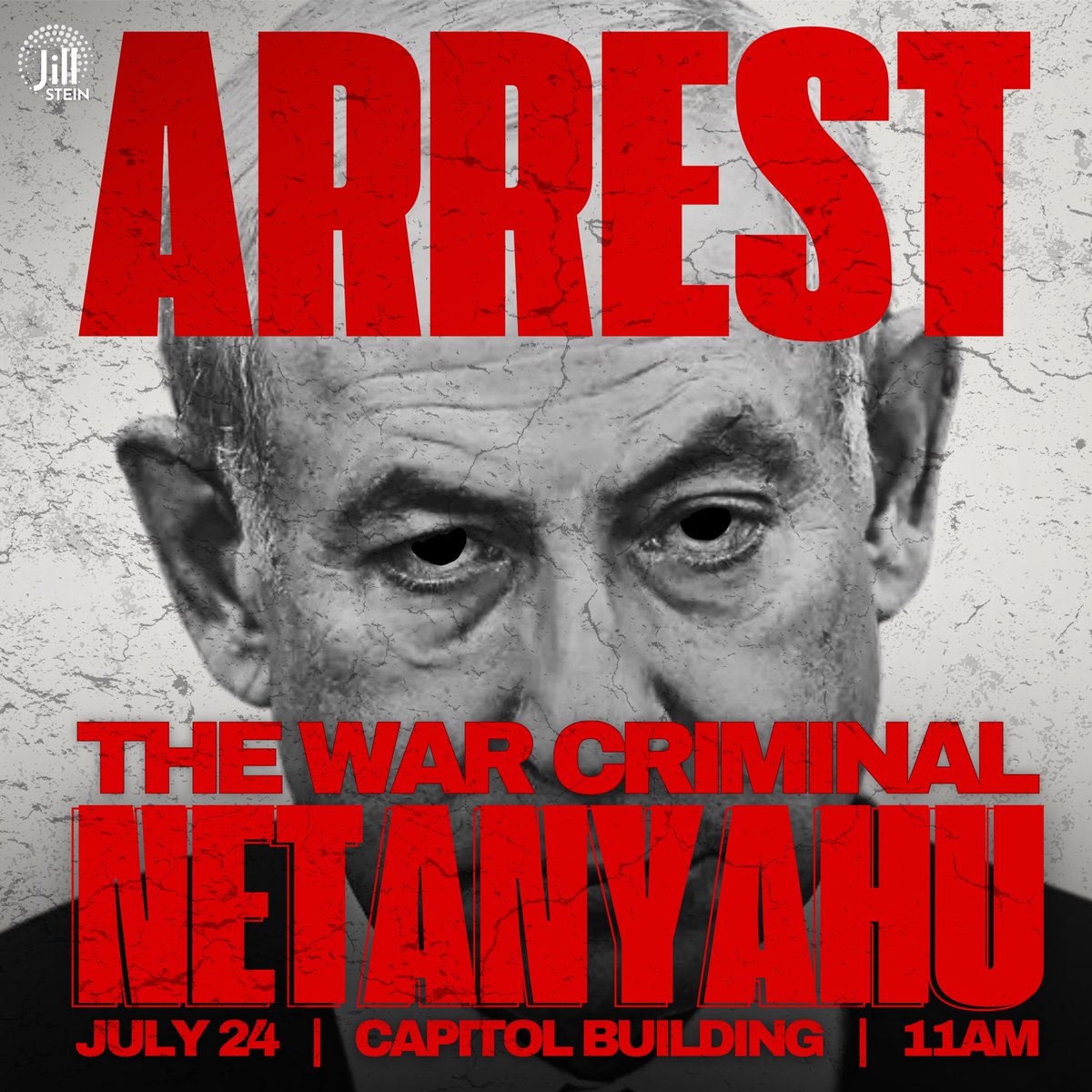
The ceasefire crumbled when Israel launched a massive airstrike campaign overnight on March 18.
Netanyahu’s corruption trial had a hearing scheduled for that same day, March 18, which he skipped, citing an “urgent security consultation” after the strikes.
Prosecutors didn’t push back, and the session was canceled.
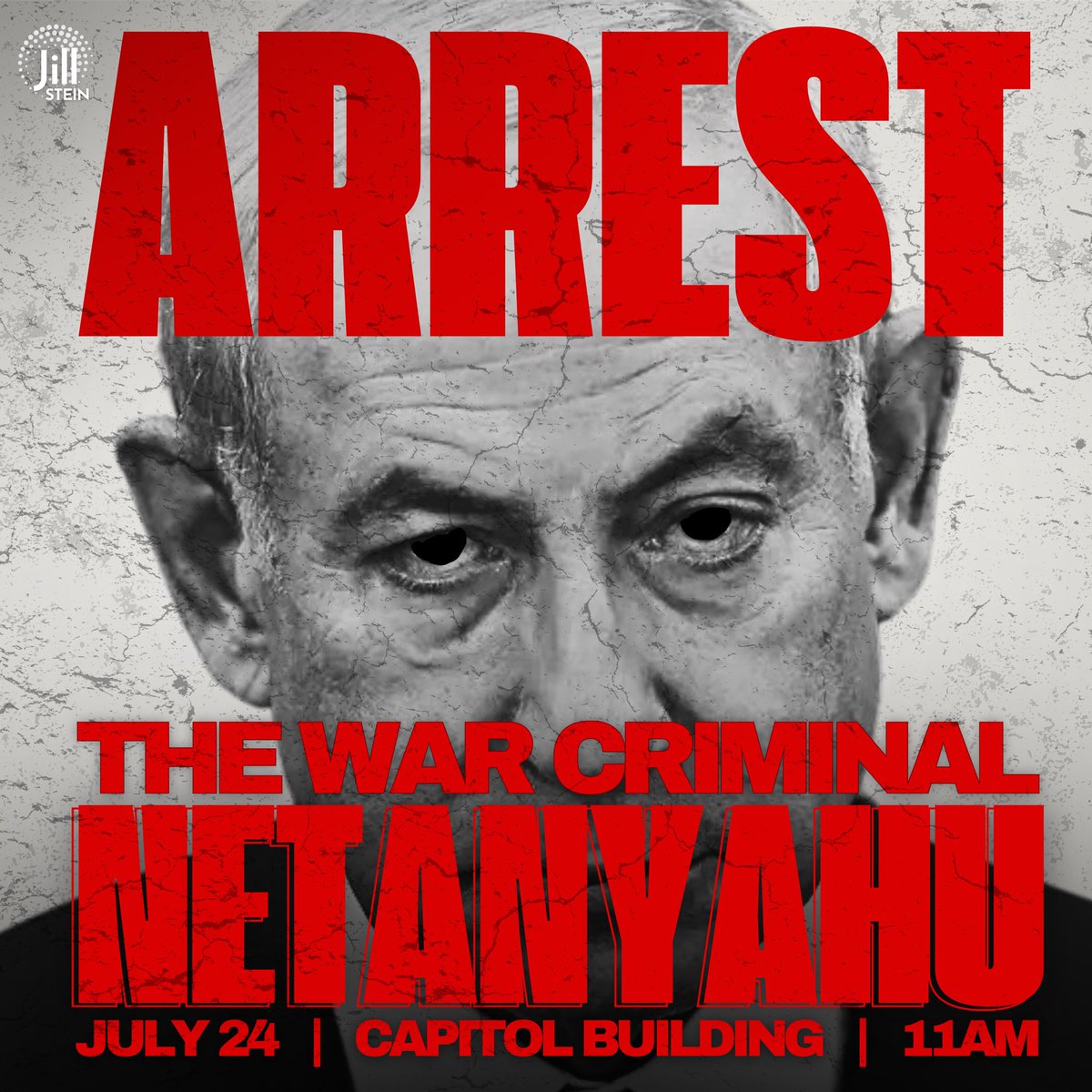
Seventeen (17) people crowded into a house in the Nur Shams refugee camp, fearing the IDF. Soldiers broke into the yard of the house, placed an explosive device there, and detonated it. Rahaf al-Ashkar, 21, was killed in front of her parents. Her father, whom she tried to save, was injured. The family was ordered to leave the house, and they do not know what was left of it. Photo: Rahaf al-Ashkar's parents, Fuad and Kifah, next to her picture and her parrot cage, this week in Tulkarm. "Help me," Rahaf managed to shout.
Only Israel can bomb three other countries with a ceasefire in effect and still play the victim. https://x.com/SuppressedNws/status/1903204848834626043
In the destroyed Jabalia camp north of the Gaza Strip, the occupation forces bombed the remaining homes at iftar time.
"May your iftar be healthy, O Muslims!" https://x.com/M_shebrawy3/status/1903140033642758343
This is what Elon "Nazi Salute" Musk does to your account when you don't subscribe to his racist white supremacy agenda. https://x.com/R34lB0rg/status/1903120160619102615/photo/1
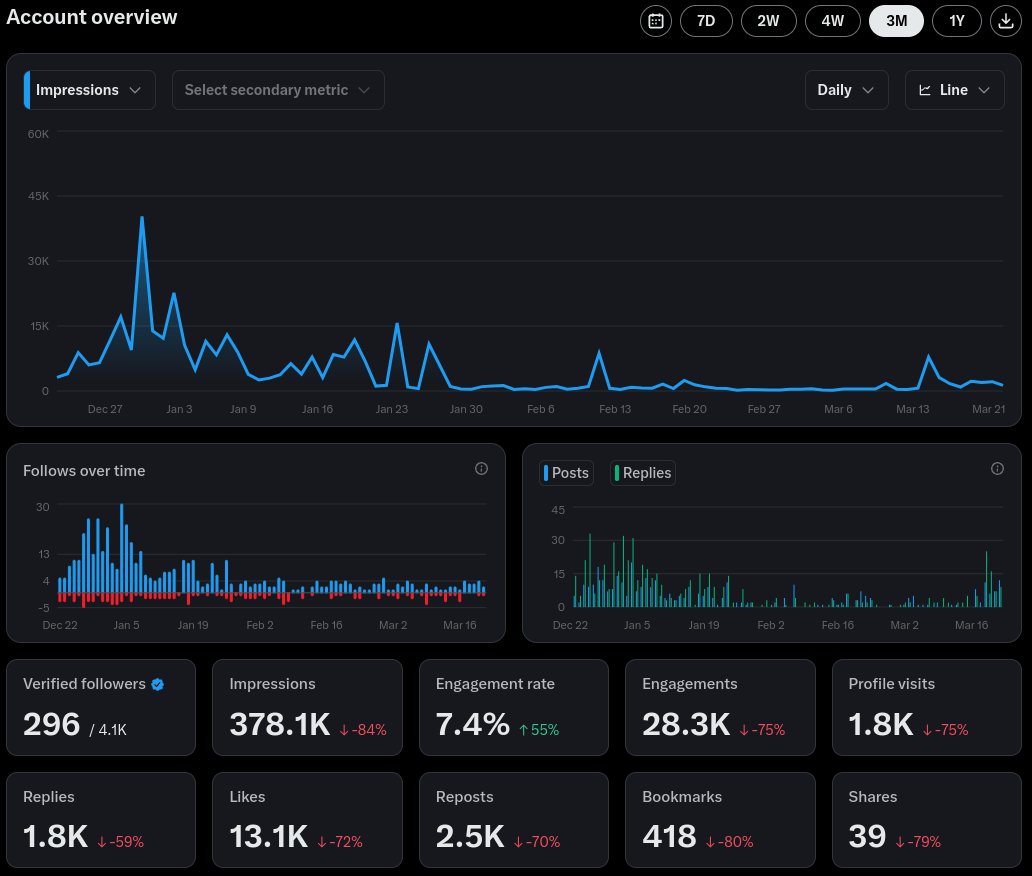
X’s algorithms have made my posts effectively invisible.
Impressions down 84%, engagement (likes, replies, reposts) down 59%-80%.
Please let me know if you’re seeing this. https://x.com/R34lB0rg/status/1903108091408777390/photo/1
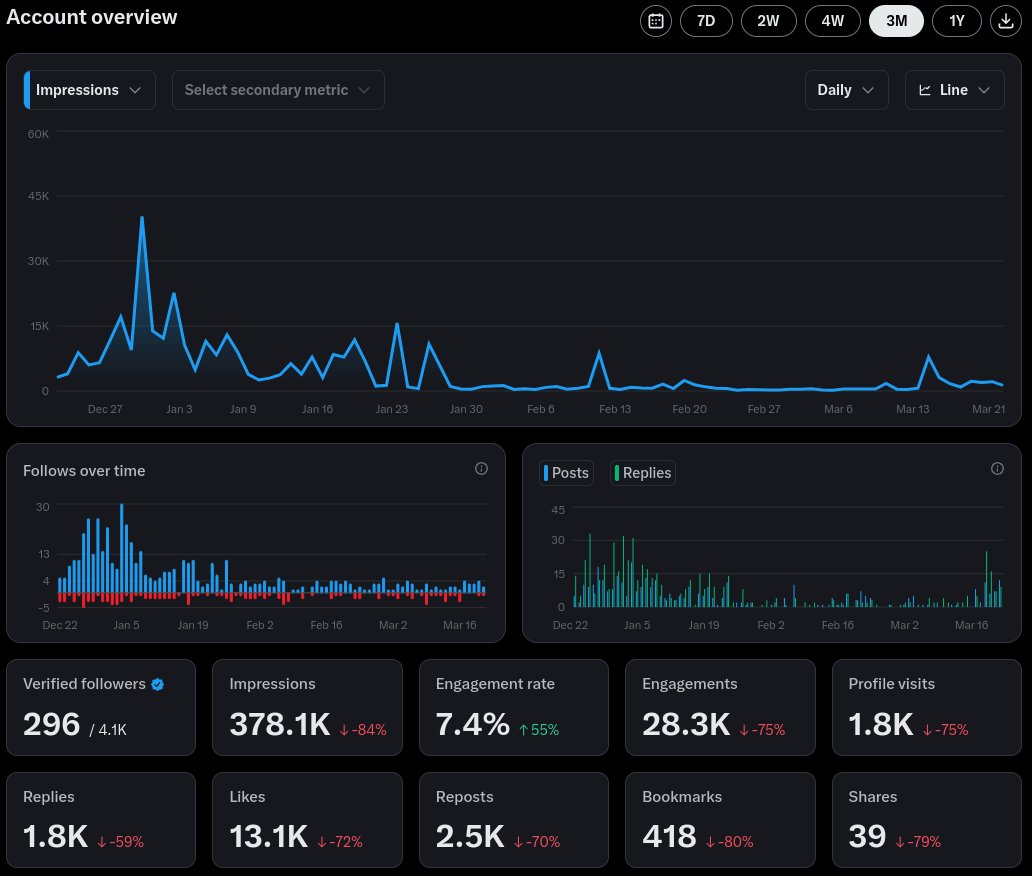
This analysis presents a nuanced and critical perspective on the historical and contemporary dynamics between Mizrahi and Sephardi Jews, Palestinians, and Israel’s current political leadership.
Mizrahi (Middle Eastern and North African) and Sephardi (originally Spanish, later Middle Eastern) Jews have lived alongside Palestinians and Arabs for centuries, sharing cultural, linguistic, and neighborly ties. These Jewish communities are historically documented as viewing Palestinians as humans and neighbors, in contrast to narratives that dehumanize them as “terrorists, monsters, or vermin.”
Historically, Mizrahi and Sephardi Jews moderated or resisted the more aggressive aspects of the Zionist agenda, particularly its Ashkenazi-led, European-centric vision. In previous Israeli governments, their influence helped temper extreme policies, fostering a more inclusive approach toward Palestinians, as seen in political actions during the 1990s under leaders like Yitzhak Rabin.
Under Benjamin Netanyahu’s leadership, Israel’s government—dominated by right-wing Zionist extremists such as Bezalel Smotrich and Itamar Ben-Gvir, who are predominantly of Eastern European (Ashkenazi) descent—has shifted toward a policy characterized as aggressive toward Palestinians. This includes military operations in Gaza, resulting in over 41,000 Palestinian deaths by March 2025 (based on trends from 2023–2024 data reported by the Gaza Health Ministry and international NGOs), and rhetoric that dehumanizes Palestinians, such as calls for the “erasure” of Palestinian villages or shooting Palestinians “on sight.”
Netanyahu (originally Mileikowsky) and Smotrich, with their direct Eastern European roots, exemplify a leadership class with significant Ashkenazi heritage, contrasting with the historical coexistence of Mizrahi/Sephardi Jews and Palestinians. This aligns with critiques, such as those in the referenced X post, of a specific group of European-descended Jews driving policies perceived as genocidal or unjust.
Recent Israeli elections (likely referring to those in 2022 or hypothetical 2024/2025 trends) have seen a decline in Mizrahi and Sephardi moderating influence, with parties like Shas aligning with Netanyahu’s coalition. This shift has contributed to a trajectory of extreme policies in Gaza and the West Bank, including settlement expansion and potential annexation, amid international accusations of genocide, as evidenced by the International Court of Justice’s (ICJ) investigation launched in 2024.
The analysis underscores a stark contrast between the historical harmony of Mizrahi/Sephardi Jews and Palestinians and the current government’s aggressive, dehumanizing approach, rooted in a specific Ashkenazi-led Zionist ideology. It reflects concern about Israel’s direction and its impact on Palestinian lives, while acknowledging the complexity of Jewish identity and politics within Israel.

The EU does not want you to see / know this: https://x.com/R34lB0rg/status/1903079062857273827/photo/1
